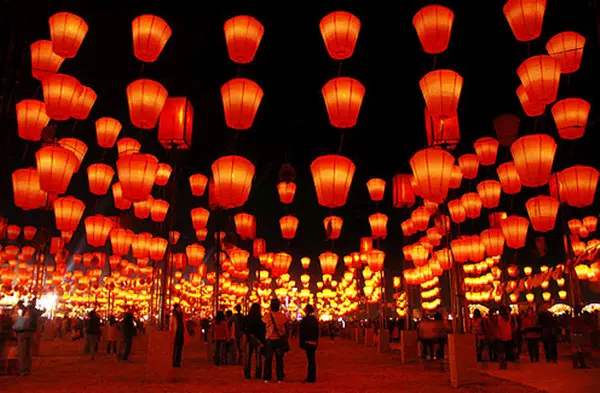Colorful lanterns are lighting up the Chinese night sky, as activities begin across the country to celebrate Lantern Festival on Saturday.
In Quanzhou city, eastern China's Fujian Province, the lantern shows kicked off Thursday night. Xinmen Street was decorated by 805 traditional hand-made lanterns embroidered with various beautiful patterns.
"While enjoying the shows, some people walk around with a small lantern in hand, making the atmosphere especially festive," Mai Binbin, a local resident, said.
At the Confucius Temple, a tourist spot in Nanjing city, eastern China's Jiangsu Province, tens of thousands of colorful lanterns for a grand lantern show are creating a sea of lights to attract tourists.
Local resident Mao Mingjuan took her son to the temple to watch the lanterns Thursday evening.
"I hope this visit will help the kid better understand the history of the festival and the temple," she said.
Dating back to the Western Han Dynasty (202 BC - 8 AD), the Lantern Festival is held on the 15th day of the first lunar month to mark the first full moon of the lunar new year.
You Guoqing, a folk custom expert in Tianjin Municipality, said that, differing from some other traditional festivals that stress family gathering, the Lantern Festival was more about going out for a celebration.
Besides watching lanterns, it is also a day to appreciate the full moon, solve lantern riddles, watch art performances and eat "tang yuan" -- dumpling balls made of glutinous rice, usually with sweet fillings.
The festival was once also a time for romantic encounters. In feudal times, young women were not allowed to go out freely, but Lantern Festival was an exception, when young men and women could meet up.
Some aspects of the festival, such as its romantic atmosphere, are fading, but people still see the festival as a day to rejoice and wish for happiness.
Childhood memories of Lantern Festival are still vivid for Yu Le'an, an elderly man from Changsha, capital of central China's Hunan Province.
"Due to the limited economic conditions, we kids were so expectant for the arriving of new years and festivals, as it would be a time when we could have new clothes and good things to eat," he said. "Sometimes my mom would wrap a small ancient coin in a tang yuan when making them, and ask us to eat slowly and watch out for our teeth. The coin was believed to be able to bring about luck and good health to the one who find it."
The Lantern Festival is a now a mixture of the traditional and modern.
The workshop of lantern craftsman Lyu Xiezhuang in Shanghai is especially busy, as flocks of people visit to appreciate and buy his lanterns on the eve of the festival.
Lyu, 63, is glad to see people's love for the lanterns, but she believes that there is still much to do to ensure the traditional craftsmanship survives.
She believes "innovation" is key to keep the ancient art alive, and has been exploring the creation of lanterns of different patterns and colors catering for modern day aesthetics.
The spirit of innovation is on display in Quanzhou: the lantern shows of Fengze District are brilliant -- a blend of traditional lanterns and modern LED lights.
Quanzhou has also launched an online lantern show, demonstrating pictures of creative lanterns and offering live broadcasts of lantern shows across the city.
(APD)
 简体中文
简体中文





